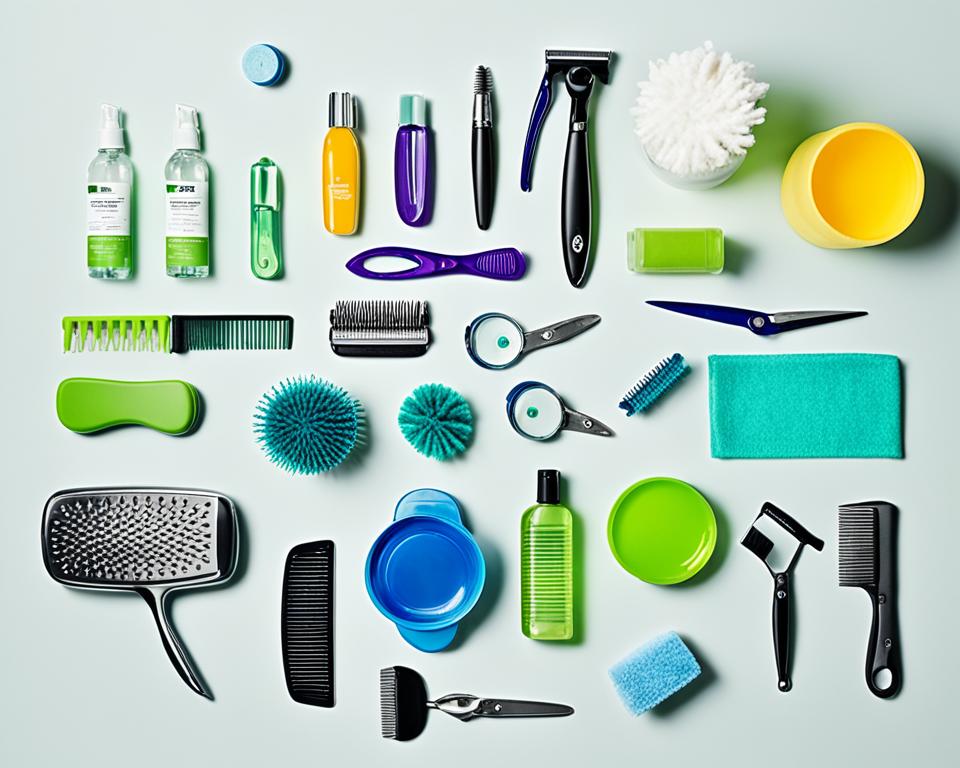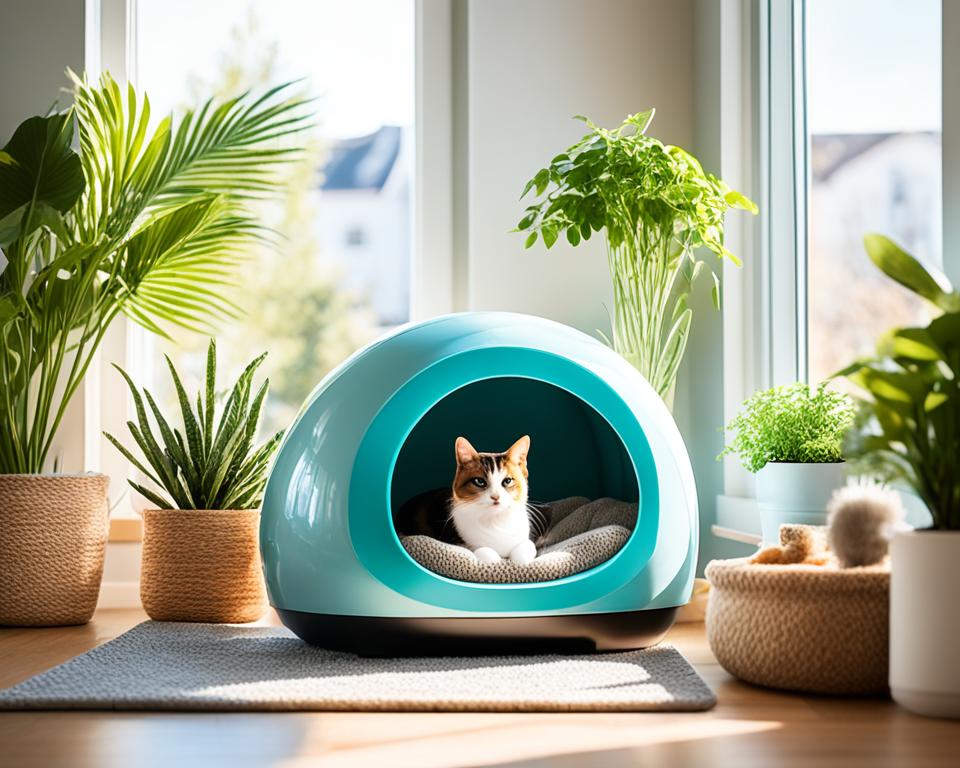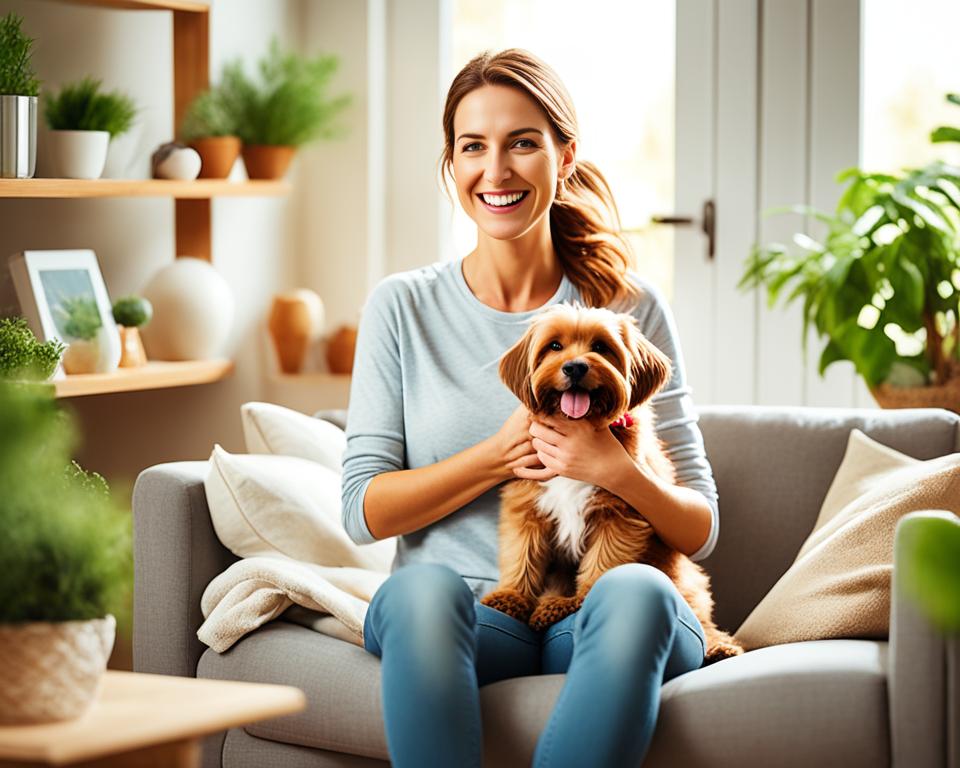Being a responsible pet owner means more than just feeding and housing your pet. It’s about making a safe and caring space for their health and happiness. I’ve learned that yearly vet visits are key. They keep your pet healthy and stop problems before they start.
Pet care is not only about their health. Early socialization is vital for well-adjusted pets. It makes a big difference in how they act. Regular grooming, like brushing and trimming nails, is also important.
As a pet owner, I’ve seen how crucial a safe home is for pets. Keeping dangerous items and toxic plants out of reach is a must. Regular vet check-ups and prevention medicine help keep parasites away. These steps help our pets live happy and healthy lives.
Understanding the Basics of Pet Care
Pet care is a rewarding journey that requires dedication and knowledge. As a pet owner, I’ve learned that it’s more than just food and shelter. It’s about making a loving home for our furry friends.
The Importance of Responsible Pet Ownership
Being a responsible pet owner means knowing what your pet needs. This includes the right food, exercise, and regular vet visits. For example, puppies eat more often than adult dogs:
- 8-12 weeks old: Four meals a day
- 3-6 months old: Three meals a day
- 6 months to 1 year: Two meals a day
Following local laws and regular vet visits are key. Spaying or neutering by six months is also crucial.
Assessing Your Lifestyle Before Getting a Pet
Before getting a pet, think about your lifestyle. Consider space, time, and money. Dogs need regular walks and potty breaks:
- Adult dogs: Potty breaks every 1-2 hours
- Puppies: Can hold bladder for their age in months, plus one hour
- Senior dogs: More frequent bathroom breaks
Choosing the Right Pet for Your Family
Choosing the right pet is key for a happy home. Think about your family’s life, living space, and energy levels. Some pets need more care than others. Dogs need daily walks, while cats are more independent.
Pet supplies cost money. Be ready for expenses on food, toys, and grooming tools. Knowing your pet’s behavior helps in caring for them and building a strong bond.
Providing a Nutritious Diet for Your Pet
Pet nutrition is key for their health and happiness. A balanced diet is the base of good pet care. When I got my first pet, I learned the right food makes a big difference.
Puppies and kittens need different food than adult pets. Young ones under 3 months eat four times a day. Those 3 to 5 months old eat three times a day. As they grow, their food needs change. Most switch to adult food between 6 months and 1 year old.

Adult pets eat twice a day. This keeps them at a healthy weight and helps with digestion. Cats and dogs have unique nutritional needs. Cats need 25 essential vitamins and minerals, while dogs need 23.
“A high-quality pet food focuses on the quality and source of ingredients, not just percentages on the nutrition label.”
I choose pet food that meets AAFCO standards. These guidelines make sure pet foods are complete for different life stages. I avoid grain-free or exotic diets for dogs, as they can cause heart problems.
- Dogs need water, protein, fat, carbs, vitamins, and minerals
- Cats require high animal protein and fat diets
- Senior pets may need special diets for easier digestion
Every pet is different. I talk to my vet to find the best diet for my pet’s needs. With the right diet, pets can live long, healthy lives.
The Importance of Regular Exercise and Mental Stimulation
Exercise and mental play are key for your pet’s happiness and health. A mix of physical and brain games keeps pets happy and well-behaved.
Daily Exercise Routines for Dogs
Dogs need more than just walks. I mix physical and mental exercises in their daily routine. Running and fetch help burn energy. But, obedience training also tires them out quickly.
I aim for 20 minutes of activity daily for my dogs, plus 1-2 walks. The exercise should fit your dog’s age, breed, and health. Young dogs do well with short, frequent activities.
Playtime and Activities for Cats
Cats need exercise and mental challenges too. I use feather wands and hunting toys to keep them active. These toys satisfy their natural instincts.
Mental Stimulation Through Interactive Toys and Games
Interactive toys are great for mental play. I give dogs puzzle toys to improve their problem-solving. For cats, I set up obstacle courses or hide treats to encourage them to explore.
- Nose detection games: hiding treats in shoeboxes
- Obedience training combined with physical play
- Puzzle toys for problem-solving
These activities have cut down on destructive behavior and boosted my pets’ well-being. Mental play improves their thinking, lowers stress, and strengthens our bond.
Grooming and Hygiene: Keeping Your Pet Clean and Healthy
Pet grooming is key for your pet’s health and happiness. It keeps them looking good and stops health problems. Not grooming your pet can cause skin allergies and behavior issues.

Let’s start with pet hygiene basics. Brushing your pet’s coat once a week removes dead hair and skin cells. This helps air get to their skin better. It also stops matting and cuts down on shedding, making your home cleaner.
Bathing is also important for coat care. Most pets need a bath once a month. But long-haired pets might need baths every two months. Use special pet shampoos to keep their coat’s natural oils.
“Regular grooming fosters a strong bond between pet and owner, deepening the emotional connection.”
Don’t forget about nail trimming and dental care. Long nails can cause walking problems and arthritis. Trim your pet’s nails every 2-3 weeks. For dental care, brush their teeth often and get professional cleanings once a year to stop tartar and gum disease.
- Brush your pet’s coat weekly
- Bathe monthly (or bi-monthly for long-haired breeds)
- Trim nails every 2-3 weeks
- Clean ears and brush teeth regularly
Grooming is more than making your pet look good. It’s a time to check for health issues like lumps or skin problems. Finding these early can really help your pet stay healthy.
Regular Veterinary Care: A Cornerstone of Pet Health
As a pet owner, I know that regular vet visits are key for my pet’s health. It’s not just about fixing problems; it’s about keeping them away. Let’s see why routine check-ups are crucial for a happy, healthy pet.
Annual Check-ups and Vaccinations
Yearly vet visits are key for keeping pets healthy. These visits catch early signs of problems like cancer or parasites. Young pets may need more visits, while older pets might need them less often.
During these visits, vets do important tests and update shots. This helps prevent deadly diseases like rabies and parvovirus.
Dental Care for Pets
Did you know bad breath in pets can mean health problems? Regular dental care is a must. Pets with regular dental care are healthier than those without.
As part of my pet’s care, I make sure dental hygiene is included. This helps prevent future problems.
Recognizing Signs of Illness in Your Pet
Knowing when your pet is sick is crucial for quick vet care. Signs like strange behavior, vomiting, or limping mean it’s time to see the vet. Pets with health records get faster treatment in emergencies.
Pet insurance can help with vet bills and make sure your pet gets the best care. Regular vet visits improve your pet’s health and strengthen your bond.
| Health Indicator | Impact of Regular Vet Care |
|---|---|
| Treatment Outcomes | Increased success for early-detected issues |
| Quality of Life | Enhanced based on qualitative assessments |
| Human-Animal Bond | Strengthened following regular vet visits |
Creating a Safe Home Environment for Your Pet
Creating a safe home for your pet is very important. It’s key for their health and happiness. Let’s look at some steps to keep your pet safe and comfy.
First, make sure to keep dangerous items away. This means cleaning supplies, medicines, and chemicals should be locked up. In fact, 67% of pet owners do this to keep their pets safe.
Also, don’t have toxic plants around. Many houseplants can hurt pets if they eat them. 56% of pet owners know this and keep these plants away from their pets.

Next, make sure your pet has a comfy place to rest. Give them the right kind of bedding and a quiet spot to hide when they feel stressed. This helps them feel safe and less stressed.
“A safe home is a happy home for both pets and their owners.”
Checking your home often is important to find dangers for your pet. Look for small things they could swallow, loose wires, or gaps in fences. 71% of pet owners check their yards for holes or gaps to stop pets from getting out.
| Safety Measure | Percentage of Pet Owners |
|---|---|
| Secure cleaning supplies and chemicals | 67% |
| Remove toxic plants | 56% |
| Install safety gates for stairs | 43% |
| Provide scratching posts for cats | 75% |
By doing these things, you’ll make a safe and comfy home for your pet. Remember, a safe home means a happier, healthier pet.
Pet Care: Essential Tips for New Pet Owners
Bringing a new pet home is exciting! As a new pet owner, I’ve learned that proper care means making a cozy space. It also means setting routines and focusing on training and socializing your pet. Let’s explore these key points to make your furry friend feel at home.
Setting Up a Comfortable Living Space
I made sure my pet had a cozy place to sleep, safe toys, and a spot for meals. About 65% of pet owners need to make their homes safe for pets. I removed dangerous items and tied up wires to stop accidents.
Establishing a Routine
Being consistent is key in caring for a new pet. I set regular times for meals, walks, and play. This helps pets feel secure and makes house training easier. Did you know 70% of pets need training when they come home? Be patient!
Basic Training and Socialization
Pet training and socialization are important for a happy pet. I began with simple commands and rewards. For socialization, I slowly introduced my pet to new things, people, and animals. It’s good to spend 1-2 weeks on this. Interestingly, 60% of pet owners think socialization is key in pet care.
Remember, every pet is different. If you’re having trouble, don’t hesitate to get help. With love, patience, and the right care, your new pet will become a beloved family member!
Understanding Your Pet’s Behavior and Communication
Pet behavior and animal communication are really interesting. Dogs use their tails to talk to us. They wag their tails more to the right when they’re happy, like when they see their owners.
The speed of the wag also tells us how excited they are. Sometimes, a fast wag can mean they’re feeling stressed or upset.
Dogs have many ways to communicate. A play bow means they want to play. Yawning can be a way to calm down in stressful times. Lip-licking might show they’re feeling anxious, not hungry.
Even a dog’s eyes can tell us a lot. Soft eyes mean they’re calm or happy. But showing the whites of their eyes, or “whale eye,” can mean they’re stressed.
Knowing these signs is key to a strong bond with our pets. It’s not just for dogs. Cats also have their own way of talking through body language and sounds. By understanding these signals, we can meet our pets’ needs better.
This knowledge helps us and our pets live together happily. It makes our homes more joyful for everyone.

